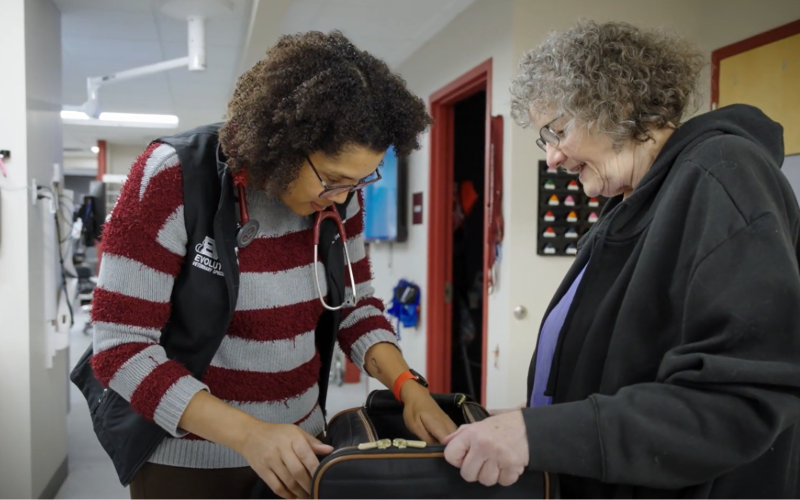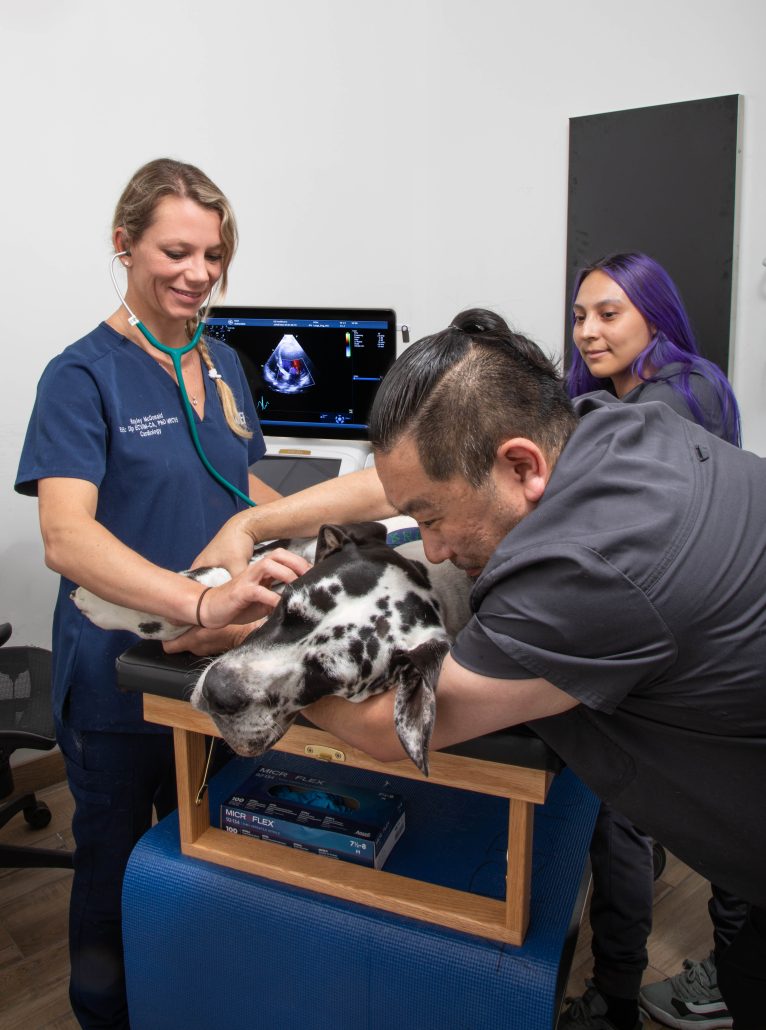How Accurate Are CT Scans For Dogs in Detecting Health Issues?}
The Role of Ultrasound and CT Check in Modern Veterinary Practices: Insights From Experienced Professionals
In modern vet techniques, ultrasound and CT scans greatly boost diagnostic abilities. These imaging techniques offer essential insights right into animal health, guiding therapy choices. Experienced professionals identify the unique advantages of each method. Ultrasound offers real-time evaluations, while CT checks supply elaborate physiological details. Understanding their applications and roles raises important concerns concerning their effect on individual end results and the future of veterinary diagnostics. What insights can be gotten from their incorporated usage?
Comprehending Ultrasound in Vet Medicine
Ultrasound is a necessary analysis device in veterinary medicine, offering a non-invasive approach to picture internal frameworks. This imaging method employs high-frequency acoustic waves to create real-time pictures of cells and organs, permitting veterinarians to assess problems without surgical intervention. Usual applications include examining the heart, liver, kidneys, and reproductive organs, along with keeping an eye on pregnancies.The procedure is reasonably quick and can be done in various setups, making it an available alternative for veterinarians. Unlike radiography, ultrasound gives comprehensive details regarding soft cells and blood flow, which is crucial for exact diagnoses.Veterinary experts count on ultrasound to discover irregularities such as tumors, cysts, and liquid buildup. Its capability to lead biopsies and other treatments further enhances its utility in clinical technique. By offering a efficient and secure way to examine internal anatomy, ultrasound has become a cornerstone of contemporary veterinary diagnostics.
The Benefits of CT Scans for Animal Diagnostics
CT checks deal considerable advantages in veterinary diagnostics by supplying boosted precision in identifying internal problems (Cancer Veterinary Near Me). As a non-invasive imaging technique, they ensure the security and convenience of pets throughout examinations. In addition, CT scans promote a thorough assessment of internal frameworks, permitting more effective therapy preparation
Boosted Analysis Accuracy
Developments in imaging innovation have significantly improved diagnostic accuracy in vet medication, specifically through using CT scans. These scans give detailed cross-sectional photos of an animal's internal frameworks, allowing veterinarians to recognize problems with accuracy. The high resolution and three-dimensional capacities of CT imaging facilitate the detection of conditions such as lumps, cracks, and internal blood loss that could be missed with standard imaging techniques. Additionally, CT scans can assist in pre-surgical preparation by using a complete sight of physiological relationships. This degree of information not just improves the accuracy of diagnoses but additionally aids in tailoring efficient treatment strategies. Subsequently, the assimilation of CT innovation into vet practices is transforming the landscape of animal health care, enhancing results for clients.
Non-Invasive Imaging Technique
The introduction of non-invasive imaging strategies has reinvented animal diagnostics, with CT checks becoming a noticeable tool in veterinary methods. These scans offer high-resolution, cross-sectional pictures of a pet's inner structures, permitting veterinarians to analyze intricate conditions without the demand for intrusive procedures. The advantages of CT scans include their capability to identify growths, fractures, and internal blood loss with impressive accuracy. Additionally, they promote the evaluation of soft cells and organs, boosting analysis abilities. The rate of CT scanning enables quick decision-making, which is crucial in emergency scenarios. By minimizing anxiety and discomfort for the animal, CT scans add to a much more gentle approach to diagnostics, ultimately improving therapy end results and advancing veterinary care.
Comprehensive Internal Assessment
A comprehensive interior assessment is essential for accurate diagnosis and efficient therapy in veterinary medication. CT checks deal considerable benefits in this regard, giving in-depth cross-sectional pictures of a pet's inner frameworks. This sophisticated imaging modality improves visualization of complicated physiological regions, enabling vets to determine problems such as growths, cracks, and interior bleeding with greater accuracy. Additionally, CT checks facilitate the evaluation of conditions that might be testing to detect with standard methods. The speed and precision of CT imaging also contribute to prompt interventions, improving person results. As vet methods significantly incorporate CT innovation, the benefits of considerable internal assessments end up being apparent, reinforcing the relevance of this tool in contemporary vet diagnostics.
Comparing Ultrasound and CT Imaging Techniques
While both ultrasound and CT imaging offer important duties in vet diagnostics, each method offers unique advantages and constraints that can affect medical decision-making. Ultrasound is especially valued for its real-time imaging capacities, permitting vets to observe vibrant physiological processes. This method is non-invasive, mobile, and does not entail ionizing radiation, making it a safer alternative for both clinicians and animals. Nevertheless, ultrasound may have limitations in envisioning particular physiological structures or deep tissues.Conversely, CT imaging provides thorough cross-sectional views of the body, permitting specific localization of abnormalities. It stands out in evaluating complicated body organs and frameworks, specifically in the thorax and abdominal area. CT scans call for sedation or anesthetic in numerous instances and involve direct exposure to ionizing radiation. Inevitably, the choice between ultrasound and CT relies on the specific medical scenario, the area of passion, and the urgency of the analysis needs.
Case Researches: Successful Medical Diagnoses Via Imaging
Study highlight the substantial improvements in analysis precision attained via advanced imaging innovations like ultrasound and CT scans in vet methods. These innovations not just improve the discovery of various problems however likewise help with effective and prompt treatment strategies. Examining details situations can highlight the transformative influence of these Check This Out imaging methods on vet medication.
Analysis Accuracy Improvements

Imaging Innovation Advancements
As vet imaging technology remains to evolve, its effect on analysis capacities ends up being increasingly apparent. Recent study highlight the successful application of advanced ultrasound and CT scan techniques in determining complex problems. A veterinary facility made use of high-resolution CT scans to detect an uncommon kind of lung cancer cells in a dog, which standard imaging had missed out on. In a similar way, an ultrasound evaluation exposed an abdominal mass in a pet cat, motivating timely surgical intervention and a favorable end result. These advancements not only improve analysis precision yet likewise make it possible for vets to create targeted treatment plans. By leveraging innovative imaging innovations, veterinary specialists are markedly improving client treatment, bring about much more effective monitoring of various health problems in animals.
The Role of Imaging in Emergency Veterinary Treatment
Imaging plays an important function in emergency vet care, providing veterinarians with crucial info needed to make quick, educated choices. In immediate scenarios, strategies like ultrasound and CT scans enable professionals to swiftly examine a pet's interior frameworks, identifying essential conditions such as interior bleeding, cracks, or organ abnormalities. These imaging methods enable for real-time examinations, promoting timely interventions that can be life-saving. For example, ultrasound is very useful for examining soft cells injuries and problems like fluid build-up, while CT checks offer detailed pictures of complicated anatomical structures, necessary for diagnosing trauma cases. The speed and precision of these imaging strategies improve the vet's capability to design reliable treatment strategies, making certain the most effective possible outcomes for their patients. The integration of advanced imaging technologies right into emergency situation vet methods is not only helpful yet increasingly necessary, as it boosts diagnostic capabilities and enhances general animal treatment during vital moments.

Training and Know-how in Veterinary Imaging
Sophisticated imaging strategies such as ultrasound and CT scans are crucial for effective veterinary care, the successful application of these modern technologies greatly depends on the training and proficiency of veterinary professionals. Skillful use imaging tools calls for thorough expertise of makeup, pathology, and the concepts underlying each modality. Vet professionals need to go through specific training to properly translate imaging outcomes, which is crucial for detecting conditions and intending treatment.Certifications and continuing education and learning in veterinary imaging enhance the abilities of professionals, allowing them to stay upgraded with technological improvements. Cooperation in between radiologists and vets typically causes boosted analysis precision, as experts can offer understandings right into complex instances. Furthermore, functional experience in handling imaging equipment promotes confidence in its application. Ultimately, the quality of vet imaging services is directly correlated to the degree of training and proficiency possessed by the professionals using these crucial diagnostic devices.
Future Fads in Diagnostic Imaging for Animals
With the fast innovations in technology, vet diagnostic imaging is positioned for significant development in the coming years. Arising trends suggest a shift in the direction of more available and mobile imaging methods, such as portable ultrasound gadgets, which could enhance area diagnostics. Furthermore, the assimilation of fabricated knowledge is anticipated to revolutionize photo evaluation, enabling quicker and much more accurate analyses of results.Moreover, advancements in 3D imaging strategies and computed tomography will offer veterinarians with even more detailed sights of animal anatomy, resulting in improved treatment plans. Online truth modern technology may additionally contribute in surgical planning and education, providing veterinarians an one-of-a-kind viewpoint on intricate cases.As telemedicine proceeds to expand, remote appointments promoted by diagnostic imaging will certainly end up being much more usual, permitting professionals to assist family doctors in real-time. Generally, these patterns are readied to enhance the performance and efficiency of veterinary care, ultimately enhancing animal results.
Often Asked Questions
Just How Much Do Ultrasound and CT Checks Cost in Veterinary Facilities?
The costs of ultrasound and CT scans in veterinary facilities generally vary from $300 to $1,500, relying on elements such as location, facility kind, and details procedures required for the pet's medical diagnosis and therapy.

Exist Any Type Of Risks Associated With Ultrasound and CT Scans for Pet Dogs?
Ultrasound and CT scans generally posture marginal dangers to animals. Nonetheless, prospective issues consist of sedation reactions and exposure to anesthetics. Ultrasound For Dogs. Vets carefully examine each situation to mitigate any kind of dangers connected with these analysis treatments
How Much Time Do Ultrasound and CT Treatments Usually Take?
Ultrasound treatments generally take about thirty minutes to an hour, depending upon the intricacy. CT scans, being more thorough, typically need 30 mins to 90 minutes, including preparation and healing time for the pet dog.
Can All Veterinarians Perform Ultrasounds and CT Scans?
Not all vets can execute ultrasounds and CT scans. Specialized training and certification are often needed to ensure proficiency in these sophisticated imaging strategies, which may limit their availability to Our site veterinarians with added qualifications try here and resources.
What Types of Animals Profit A Lot Of From These Imaging Techniques?
Certain pet varieties, specifically pet cats and dogs, benefit substantially from ultrasound and CT scans. These imaging techniques boost analysis accuracy for conditions like growths, inner injuries, and body organ problems, causing better therapy end results and patient treatment. The high resolution and three-dimensional capacities of CT imaging assist in the discovery of problems such as growths, fractures, and inner bleeding that may be missed with traditional imaging methods. Instance studies illustrate the significant enhancements in analysis accuracy accomplished with advanced imaging modern technologies like ultrasound and CT scans in vet practices. Improving diagnostic accuracy in vet methods has actually been substantially helped by advancements in imaging technologies such as ultrasound and CT scans. Advanced imaging methods such as ultrasound and CT scans are essential for efficient vet care, the successful implementation of these modern technologies heavily depends on the training and competence of veterinary specialists. Vet specialists must undergo specific training to accurately interpret imaging outcomes, which is essential for detecting conditions and intending treatment.Certifications and proceeding education and learning in veterinary imaging enhance the skills of experts, allowing them to stay updated with technological innovations.